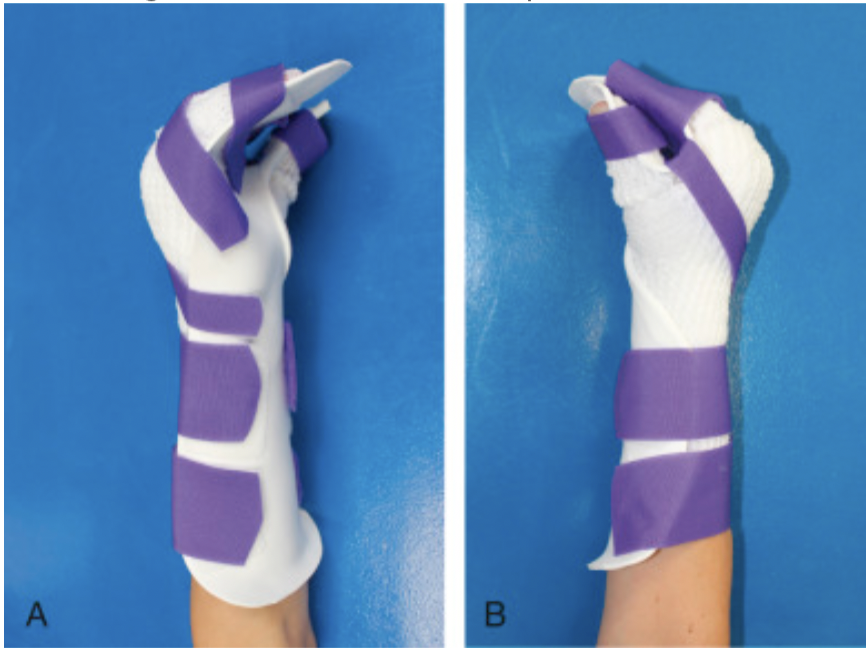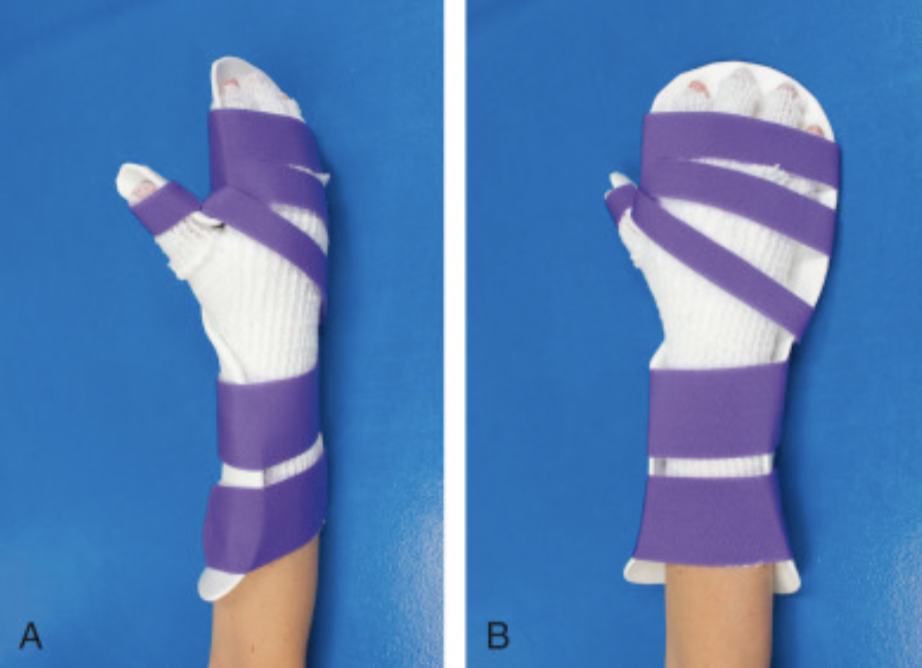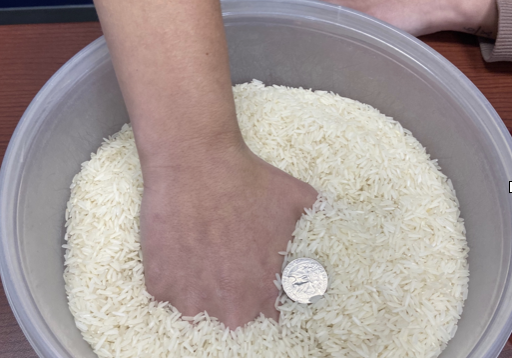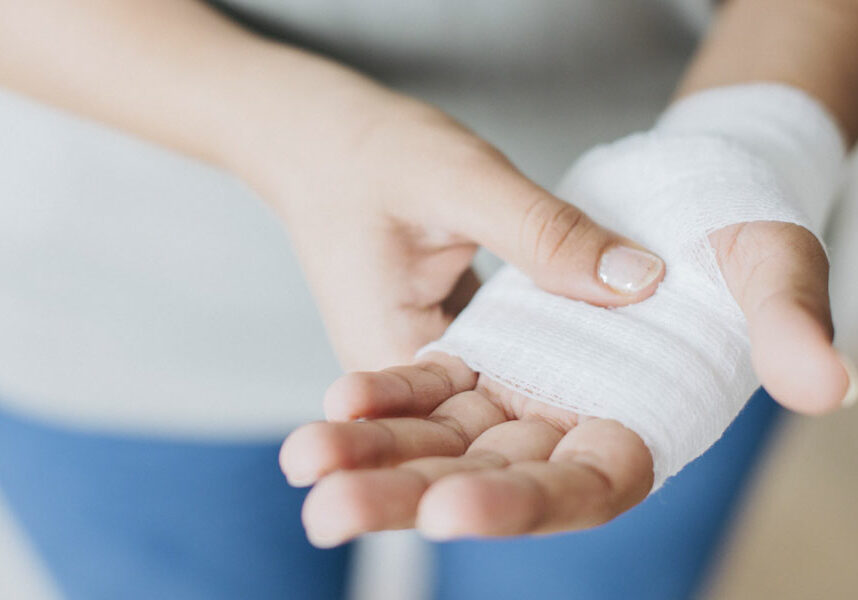By: Sophia Grimm
Hand burns can be very challenging to treat, and successful rehabilitation begins early after acute injury. Following a burn injury, scar contractures are the primary reason for the deformity of the hand. Therefore, proper orthotic intervention is key to preventing joint and ligament contractures (Kelly, Berenz & Williams, 2019). Splinting goals following a burn injury change depending on the stage of healing. In the acute stage where the wounds are 50% closed or skin, grafting has begun, static orthoses are used for positioning, edema management, and contracture prevention. The intermediate stage of wound healing is from about 50% of wound closure to complete wound closure and consists of static orthoses, static progressive orthoses, and/or dynamic orthoses. During the intermediate stage, orthotic intervention is used for positioning, tissue stretching, and lengthening to prevent contracture formation. The long-term stage of healing is from wound closure to maximal benefit and outcome of rehabilitation. During this phase, static progressive and dynamic orthoses are used to provide stretch, promote tissue gliding, decrease stiffness, and strengthen weakened structures (Kelly, Berenz & Williams, 2019).
The type of orthosis used for a hand burn depends on the location of the burn and the anticipated deformity. Typical deformities seen in hand burns include; hyperextension of the MCP’s, flexion deformity of the IP’s, loss of transverse metacarpal arch, adduction contracture of the thumb, wrist flexion contracture, and shortening of the dorsal skin (dorsal hand burn) (Kelly, Berenz & Williams, 2019).
A patient with a burn on the dorsum of the hand will require an orthosis that positions the hand in the angle antideformity (intrinsic plus position, antideformity position of hand). The most common deformity following a dorsal hand burn is a clawhand. The dorsal surface of the hand is thin and highly mobile, which allows for extensor tendon gliding. When a burn occurs in this area, extensor tendons are prone to subsequent injury resulting in deformities such as matter finger, boutonnière deformity, or swan neck deformity. To prevent deformity, the hand should be positioned with the wrist in 15 to 30 degrees of extension, the MCP joints in 70 to 80 degrees of flexion, the IP joints straight, and the thumb abducted. This position preserves the hand’s arch and places the MCP collateral ligaments in a maximal stretch position.


Kelly, B. M., Berenz, T., & Williams, T. (2019). Orthoses for the Burned Hand. Atlas of Orthoses and Assistive Devices. doi:10.1016/b978-0-323-48323-0.00015-9
Palmar hand burns should be positioned in a palmar extension splint to prevent flexion contractures. The palmar burn’s antideformity position consists of wrist extension, MCP joint extension, IP joint extension, digital abduction, and thumb abduction and extension. Palmar burns frequently result in the loss of the first webspace, thus compromising the thumb’s use.
Circumferential hand burns will require splinting in alternating positions to include intrinsic plus position and palmar extension position each day. Individuals with circumferential burns are at an increased risk of compartment syndrome and subsequent musculoskeletal and nerve damage.
Patients with limited AROM will also benefit from dynamic orthoses once wound closure has occurred. Depending on the injury, a patient may benefit from a dynamic digit flexion orthosis or extension orthosis. Both may be used in conjunction for circumferential hand burns.
Webspace contractures are common with palmar and circumferential burns. This results in limited motion of the thumb. To prevent a webspace adduction contracture, a C-bar orthosis may be used. Interdigital inserts are also used to prevent contracture formation in between digits.
In conclusion, rehabilitation of hand burns is very challenging and early treatment in the acute phase of the injury is important to maximize functional outcomes. Orthotic intervention is key in contracture prevention, edema management, and scar management throughout all phases of wound healing.
HealthPartners. (n.d.). Burn splints: Regions Hospital. Retrieved December 02, 2020, from https://www.healthpartners.com/hospitals/regions/specialties/burn-center/splints/
Kelly, B. M., Berenz, T., & Williams, T. (2019). Orthoses for the Burned Hand. Atlas of Orthoses and Assistive Devices. doi:10.1016/b978-0-323-48323-0.00015-9
1 Comments
Leave a Reply Cancel Reply
More To Read
Hand therapy intervention activities for Chemo-Induced Peripheral Neuropathy (CIPN)
Blog Post Written By: Rita Steffes Patients with CIPN may present with symptoms that include numbness, tingling, hypersensitivity to cold, loss of tactile or vibration sensitivity, decreased balance, and shooting burning pain in their hands These symptoms make it difficult for oncology patients to participate in all activities of daily living with dressing, meal preparation,…
Read MoreThe 4 Stages of Simple Wound Care in Hand Therapy
Wound care is messy. It can be intimidating and scary. With so many variations of wounds (for example, white skin around wound) and so many products out there it is hard to know what to use, when to use it, and how to use it. If you go to a wound care conference, you’ll spend most…
Read MoreHand Therapy Marketing 101
Marketing 101 – 5 Tips for Your Therapy Clinic Confession: I hate marketing. It’s my least favorite part of my job. It is so hard to open yourself up to that much rejection but still stay positive. It feels like the professional version of blind dating, except the other person probably already has a significant…
Read MoreSign-up to Get Updates Straight to Your Inbox!
Sign up with us and we will send you regular blog posts on everything hand therapy, notices every time we upload new videos and tutorials, along with handout, protocols, and other useful information.






What would you else recommend that I read to learn more about this topic and related